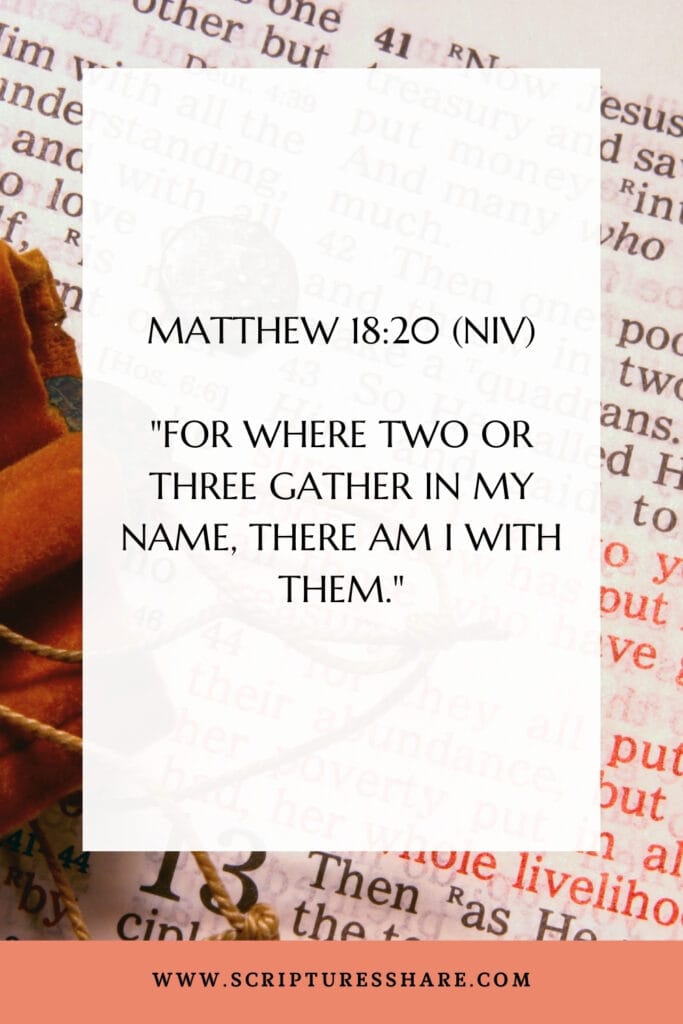No products in the cart.
The Great Dechurching: Exploring The Decline In Church
This post contains paid and/or affiliate links. I make a small commission at no extra cost to you. Please see our Privacy Policy.
In recent years, the United States has seen a major change in its religious scene. This change, known as the “Great Dechurching,” is making us rethink how we see faith and spirituality today. As more people leave churches, the way we experience religion is changing.
This shift is not just a short-term trend. It’s a big change that’s affecting how religion fits into American life. It’s linked to the rise of being “spiritual but not religious” and people leaving traditional churches.
By looking into why church attendance is dropping, we can better understand how people, communities, and faith are changing.

Introduction to the Great Dechurching
In recent years, the United States has seen a big change in its religious scene. More people are leaving churches, a trend known as the “Great Dechurching.” This change is about understanding why this is happening and what it means for everyone.
Now, many Americans call themselves spiritual but not religious. This change shows a move toward making spirituality personal and finding deeper connections outside traditional churches. People are leaving for many reasons, such as not trusting religious leaders or wanting a more personal spiritual path.
We need to investigate the drop in church attendance. Is it a short-term phenomenon, or is it here to stay? The introduction to the Great Dechurching helps us understand what’s really going on. It examines the causes and how they affect us, our communities, and society.
ADVERTISEMENT
This topic gives us insights into what Americans today want from their spirituality. It helps us understand the religious disaffiliation trend better. This can lead to a more open and caring view of this shift.
Overcoming Apathy: Gospel Hope for the Spiritually Indifferent
In today’s world, many feel disconnected from faith. Uche Anizor’s book, “Overcoming Apathy: Gospel Hope for Those Who Struggle to Care,” tackles this big issue. It helps lukewarm believers find their passion for the gospel again.
Anizor shows that to beat apathy, we need to understand why we feel disconnected. His compassionate approach helps readers deal with a culture that can make us lose touch with faith. He uses the Bible and his own stories to give believers the tools to move past being stuck and find the faith’s power again.
“Anizor’s book is a much-needed wake-up call for those who have grown comfortable in their spiritual stagnation. His insights are both challenging and deeply encouraging, offering a path forward for those seeking to reignite their passion for Christ.”
With the Great Dechurching affecting many, Anizor’s work is a ray of hope. He encourages believers to let the gospel’s message change them and restore their spiritual lives.
His advice is thoughtful and practical, urging readers to start a journey of overcoming apathy and finding the gospel hope that can touch the hearts of the spiritually indifferent.
National and Global Trends in Church Attendance
The “Great Dechurching” phenomenon is making headlines, showing us a worrying drop in church attendance. The U.S. is seeing a bigger decline than European countries. This trend is important to understand.
Only about 25% of people in the U.S. go to church weekly. In Europe, the number is even lower, at 14%. But Utah is a standout, with the second-highest church attendance rate in the world, at 41%. Only Poland beats it.
| Country | Weekly Church Attendance Rate |
|---|---|
| Utah, United States | 41% |
| Poland | 42% |
| United States (national average) | 25% |
| Europe (average) | 14% |
Utah’s religious scene is alive and well. A large 51% of people there are Latter-day Saints, and 70% go to church every week. Overall, 58% of Utahns attend religious services monthly, and 71% consider religion very or somewhat important.
Church attendance differs among various demographics. For instance, individuals residing in Utah’s suburbs are the most inclined to attend church weekly. Those with college degrees are more likely to participate in church activities than those without degrees.

Furthermore, people earning over $50,000 annually tend to attend church more regularly than those with lower incomes.
The drop in church attendance is happening worldwide, and it is being exacerbated by the COVID-19 pandemic and the increasing focus on personal spirituality. To turn things around, we need new ideas.
This could include creative ways to earn money, new types of worship, and better ways to connect with the community. These changes could help attract and retain a diverse population.
Utah: A Beacon of Religious Commitment
Utah is a shining example of deep religious commitment in the U.S. It has seen a steady increase in worship service attendance and a growth in congregations. This is unlike the decline in religious engagement seen across the country.
ADVERTISEMENT
Higher Rates of Worship Service Attendance in Utah
Utah has the second-highest rate of weekly church attendance in the U.S., at 41%. This is a big difference from the overall decline in religious participation. 58% of Utah survey respondents attend religious services at least once a month. And 70% of Latter-day Saints attend church weekly. This shows Utah’s strong religious values.
Growth of Congregations and Religious Diversity in Utah
Utah has seen a rise in the number of congregations from 2010 to 2020, from 5,557 to 6,018. This shows the health of its religious scene.
The state’s religious diversity is also growing, with 51% identifying as Latter-day Saints, 12% atheist/agnostic, 10% other Christian, and 6% Roman Catholic. This mix of faiths makes Utah a special place for religious engagement and diversity.
| Characteristic | Utah | United States |
|---|---|---|
| Weekly Worship Service Attendance | 41% | 25% (national average) |
| Monthly Worship Service Attendance | 58% | N/A |
| Latter-day Saints Attendance | 70% | N/A |
| Growth in Congregations (2010-2020) | 6,018 (2020) vs. 5,557 (2010) | N/A |
| Religious Diversity | 51% Latter-day Saints, 12% atheist/agnostic, 10% other Christian, 6% Roman Catholic | N/A |
Utah’s strong religious commitment and growing diverse congregations are a contrast to the “Great Dechurching” trend. This state’s lively religious scene gives us clues about what keeps people engaged with religion today.
The Great Dechurching: Exploring the Decline in Church
In recent years, the United States has seen a worrying trend: the “Great Dechurching.” This trend shows a big drop in church attendance and membership across the country. It’s important to look into why people are leaving churches and what’s causing this change.
National trends show a worrying picture. Some areas and groups still have strong religious involvement. But overall, many people are moving away from organized religion. The number of churches is changing, with some growing and others declining.
Also, more people are saying they don’t belong to any religion. This group, called the “nones,” is growing. This change is a big challenge for churches and leaders as they try to meet the new needs and wants of people today.
| Statistic | Value |
|---|---|
| Utah’s weekly worship service attendance rate | 58% |
| Percentage of Latter-day Saints in Utah | 51% |
| Percentage of Latter-day Saints in Utah who attend church weekly | 70% |
| Percentage of all Christians in Utah who attend weekly church services | 58% |
| Percentage of respondents in Utah who consider religion important | 71% |
| Increase in the number of congregations in Utah from 2010 to 2020 | 5,557 to 6,018 |
As we look into the great dechurching and the decline in church attendance, it’s key to understand the national trends, changes in congregations, and shifts in religious affiliation. By exploring these complex issues, we can better understand why the religious landscape in the United States is changing.

Benefits of Religious Service Attendance
Going to religious services often brings many benefits for both individuals and communities. It helps build social connections and support. It also improves health, happiness, and how active people are in their communities.
Social Capital and Community Support
Being part of religious services helps create strong social networks and a sense of community. People who go to services often have more social capital. This means they have good relationships and connections in their community.
This social capital means they can get support. They can get help with resources, information, and emotional support.
Health, Happiness, and Civic Engagement
Studies have found that going to religious services is good for your health and happiness. It also makes people more involved in their communities. Being part of a religious group gives a sense of belonging and purpose.
This can greatly improve someone’s well-being and how much they help out in the community.
| Metric | Utah | National Average |
|---|---|---|
| Weekly Church Attendance Rate | 58% | Less than 30% |
| Increase in Congregations (2010-2020) | 6,018 | N/A |
| Importance of Religion | 71% very or somewhat important | N/A |
Utah is very dedicated to religious services, with a much higher attendance rate than the rest of the country. This strong religious community boosts social capital, support, health, happiness, and civic engagement in the state.
Attendance Patterns by Geography, Education, and Income
The way people go to church in the United States is changing dramatically. This change is linked to where people live, their education, and how much they make. Understanding these changes is key for church leaders and communities to meet the new spiritual needs.
There’s a big difference in how often people go to church in suburbs, rural areas, and cities. Suburban areas usually see more people in church each week than rural and urban ones. This could be because of who lives there and the kinds of churches available.
- Suburbs often have more middle-class and upper-middle-class families. This might make them more likely to go to church regularly.
- Rural places might struggle to keep up a strong religious community. This can lead to fewer people going to church.
- Cities have many different kinds of people and things to do. This can make church attendance go up and down a lot.
How much education and income someone has also affects how often they go to church. People with more education and money tend to go to church more often. This shows that being well-off, having access to resources, and cultural background can influence someone’s church attendance.
| Attendance Patterns | Suburban | Rural | Urban |
|---|---|---|---|
| Weekly Attendance Rates | Higher | Lower | Moderate |
| Education Levels | College Degree | High School or Less | Varied |
| Income Levels | Middle-Class to Upper-Middle-Class | Lower-Income | Diverse |
The “Great Dechurching” is still happening. Knowing how attendance changes with geography, education, and income helps church leaders and communities. They can make plans to meet the changing spiritual needs of their people and the wider community.

Fostering Tolerance and Cross-Class Relationships
In today’s world, social divisions and economic gaps are growing. Religious groups can help bridge these gaps. They can create spaces for people from different backgrounds to meet and understand each other. This can lead to more tolerance and stronger community bonds.
About a quarter of U.S. adults don’t go to church, and many of them have progressive views on social issues. This is a chance for religious leaders to connect with them. They can create a place where everyone feels respected, no matter their background.
- Research shows that 17% of people with no religious ties call themselves atheists, 20% agnostic, and 63% say they have no specific religion.
- Those without a religion often have more education than those who are religious. Yet, people who say they have “nothing in particular” might have less education.
Religious groups can help tear down walls by organizing events that bring together people from different economic levels. This leads to stronger connections and a more united community.
“83% of ‘nones’ consider the desire to avoid hurting others as essential when deciding between right and wrong, demonstrating a shared commitment to ethical behavior that can serve as a foundation for building cross-class relationships.”
As society changes, religious groups must focus on promoting tolerance and mixing people from different backgrounds. This approach can build a society that values everyone, supports social progress, and strengthens community ties.
Parenting Without Panic in an LGBT-Affirming World
Today, Christian parents face big challenges in guiding their kids with faith and love. The world is changing fast, making it key to talk about sexuality and gender identity with our kids. We need to be wise, kind, and true to our beliefs.
Navigating Cultural Shifts as Christian Parents
Rachel Gilson, a well-known theologian and leader at Cru, has great advice for parents. Her book “Born Again This Way” and her podcast episode share how to talk to kids about faith and being true to themselves.
Starting these talks early is crucial, Gilson says. We should make a safe space for our kids to question and learn. By being honest, kind, and true to Jesus, we help our kids deal with today’s complex world.
Early Conversations About Sexuality and Faith
Christian parents must talk about sexuality and gender identity as the world changes. Gilson’s ideas highlight the need for support, guidance, and a focus on the gospel. By talking openly and being kind, we help our kids keep their faith strong, accept different views, and build a close bond with God.
| Key Takeaways | Insights |
|---|---|
| Navigating Cultural Shifts | Gilson’s practical steps for discipling children with grace, authenticity, and Jesus-centered love. |
| Early Conversations on Sexuality and Faith | The importance of creating a safe environment for children to ask challenging questions about faith and sexuality. |
| Advocating for Authenticity and Compassion | Gilson’s emphasis on the value of community support and a gospel-centered approach in parenting. |

Conclusion
The “Great Dechurching” in the U.S. shows a big change in how people see faith and community today. Many churches close each year, and millions of Americans are leaving organized religion. This shows how big the impact of this change is.
There are many reasons for this, like busy lives and changing values. Also, faith has gotten mixed up with politics. These changes are affecting how communities connect and the role of churches in society.
We need to think carefully about how to deal with this issue. Faith leaders, policymakers, and communities must work together. They should find new ways to keep people connected to their faith and to each other.
By understanding the different views on this topic, we can make a better future. We can help faith and community play a stronger role in our lives. This will help us stay connected as a society.
FAQ
What is the “Great Dechurching” phenomenon?
The “Great Dechurching” is when fewer people go to church in the U.S. It looks at why this is happening. Reasons include people moving away from faith, changes in culture, and shifts in population. It also talks about how this affects faith and spirituality in the country.
What is contributing to the issue of spiritual apathy and indifference?
The article talks about how some believers are not fully committed. It shares Uche Anizor’s kind approach to help those who feel disconnected. He offers hope based on the gospel for those who are not involved in their faith.
How do the national and global trends in church attendance compare?
The article looks at how church attendance is dropping in the U.S. compared to other countries in Europe. This gives a bigger picture of the “Great Dechurching” issue.
How does Utah stand out in terms of religious commitment?
Utah is known for its strong faith. It has more people attending church services and growing churches. The state also has more religious groups, showing a different story from the “Great Dechurching” trend.
What are the key reasons behind the decline in church attendance and membership across the United States?
The article explores why fewer people are going to church. It examines national trends, changes in church attendance, and shifts in religious beliefs.
What are the benefits of regular religious service attendance?
Going to church regularly has many good effects. It builds community, supports people, improves health, makes people happier, and gets them involved in civic activities. This shows why having active religious groups is important.
How do attendance patterns vary based on geography, education, and income levels?
The article shows how often people go to church and how this varies depending on where they live, their education, and their income. It examines differences in suburban, rural, and city areas and how education and money affect church attendance.
How can religious institutions foster greater tolerance and build cross-class relationships?
Religious groups can help people advance in life and build strong community bonds. They can also bring people from different backgrounds together, helping to bridge gaps in society.
What challenges do Christian parents face in raising their children in an increasingly LGBT-affirming cultural landscape?
Christian parents face challenges in today’s society that accepts LGBT people more. The article talks about how parents can deal with these changes. It stresses the need for open talks about sexuality and faith in a caring way.












